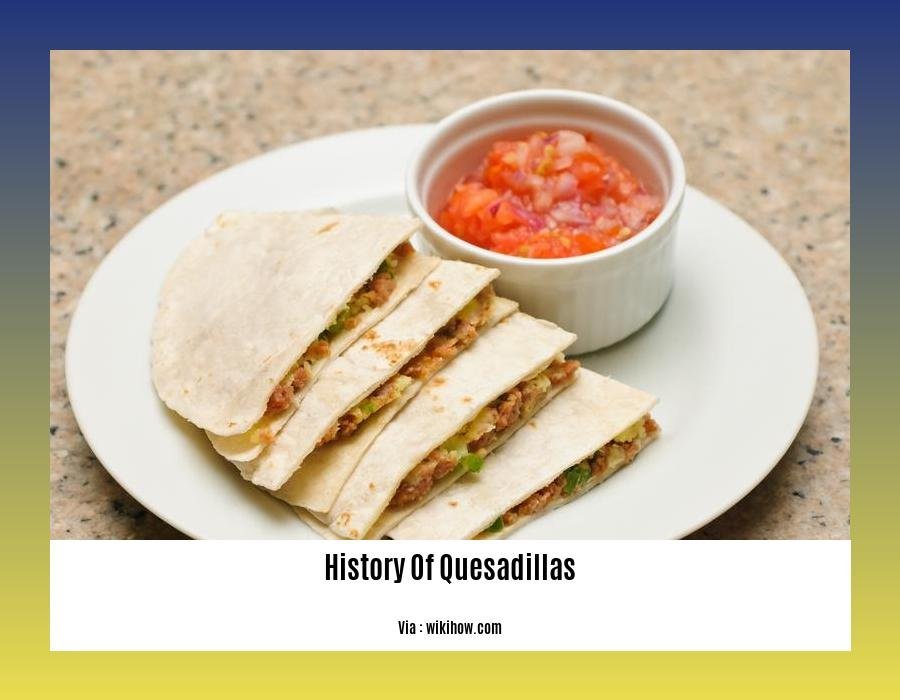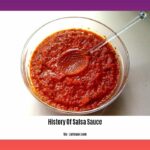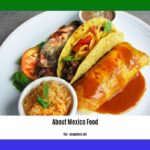Embark on a culinary journey through time as we unveil the captivating history of quesadillas. From their humble origins in ancient Mesoamerica to their triumphant rise as a beloved dish in America, quesadillas have undergone a remarkable evolution, absorbing influences from diverse cultures and leaving an indelible mark on the culinary landscape. Join us as we uncover the secrets behind this iconic dish and trace its transformation into a global sensation.
Key Takeaways:
-
Quesadillas originated in Mexico and have undergone culinary transformation throughout history.
-
The term “quesadilla” stems from the Aztec word “quiltzadillia,” translating to “little ball of cheese.”
-
Traditional quesadillas consisted of corn tortillas filled with cheese, beans, and vegetables.
-
Over time, quesadillas have embraced a diverse range of fillings, including meats, seafood, and vegetables.
-
Quesadillas are cherished in Mexico and globally, commonly served as an appetizer or main course.
History of Quesadillas: A Culinary Journey
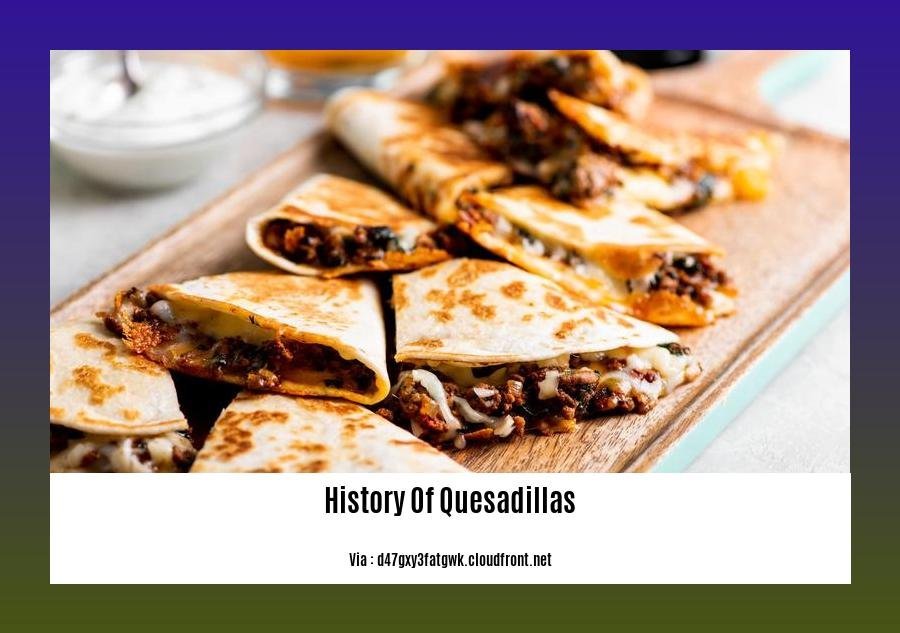
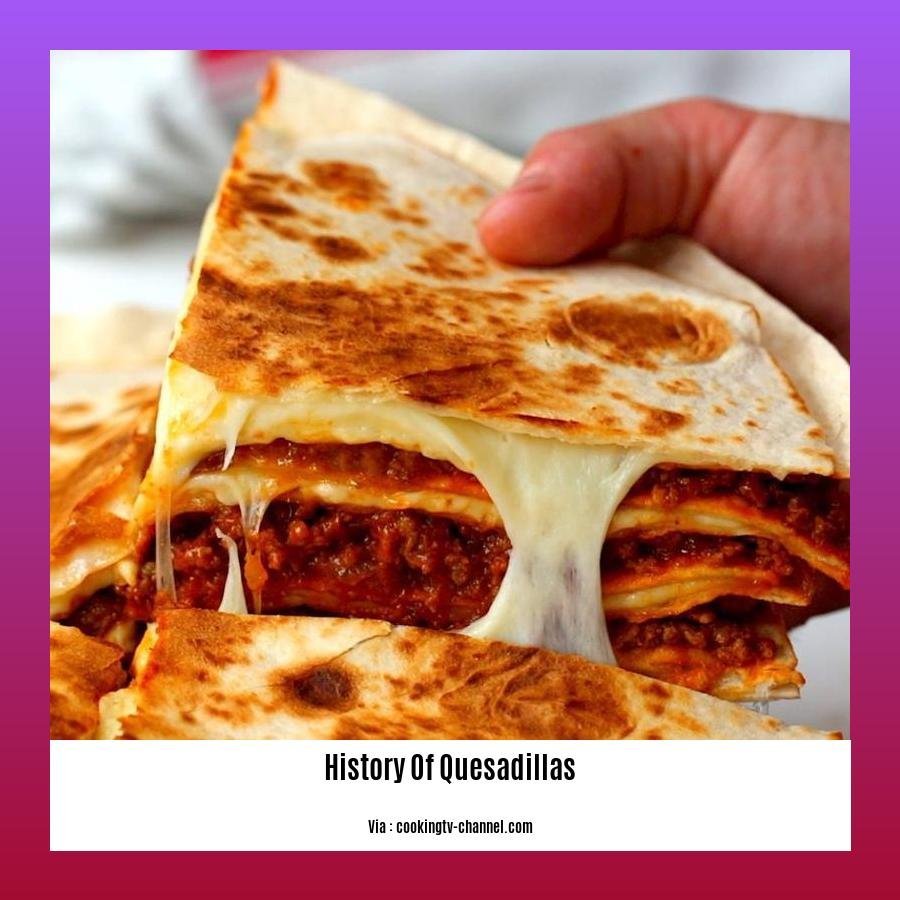
In the realm of Mexican cuisine, the quesadilla stands as a testament to the vibrant culinary history and cultural diversity of the region. With its humble origins dating back to pre-Columbian times, this versatile dish has undergone a remarkable transformation, evolving from a simple snack to a globally beloved delicacy.
The Earliest Quesadillas
The history of quesadillas can be traced back to the ancient civilizations of Mesoamerica. The Aztecs, one of the most prominent civilizations in the region, had a dish called quiltzadillia, which is believed to be the precursor to the modern quesadilla. These early quesadillas were simple in composition, consisting of a corn tortilla filled with cheese, beans, and vegetables.
Evolution and Spread
During the colonial period, as Spanish influences blended with indigenous culinary practices, the quesadilla underwent significant changes. The introduction of new ingredients, such as wheat flour and a wider variety of cheeses, brought about the creation of new and diverse variations of the dish. The Spanish also introduced frying techniques, which added a crispy golden-brown exterior to the quesadilla, further enhancing its appeal.
Over time, the quesadilla’s popularity spread beyond the borders of Mexico and into neighboring countries like Guatemala and Belize. It also found its way into the United States, where it gained widespread recognition as a delicious and convenient food. In recent years, the quesadilla has become a global culinary phenomenon, enjoyed by people from all walks of life.
Quesadillas Today
Today, the quesadilla stands as a versatile and widely accessible dish. It is prepared in countless variations, each reflecting the unique cultural influences and regional preferences of its makers. From the classic cheese quesadilla to gourmet creations filled with exotic ingredients, the quesadilla has become a staple of both home cooking and restaurant menus around the world.
A Culinary Legacy
The history of quesadillas is a testament to the enduring power of culinary traditions and the ability of simple dishes to evolve into global favorites. Whether enjoyed as a quick snack or a hearty meal, the quesadilla continues to captivate taste buds and bring joy to people worldwide.
Let’s salsa our way through history! With a dip in the past, discover the evolution of salsa, a vibrant food that was once an Aztec delicacy. From its humble origins as a spicy dip to its current position as a global phenomenon, salsa has sauced its way into our hearts and plates. Dive into the stories of salsa at the links below.
– History of Salsa Dip
– History of Salsa Food
– History of Salsa Sauce
The Evolution of the Quesadilla
Unraveling the rich culinary tapestry of Mexico, we embark on a journey through time to explore the captivating evolution of the quesadilla. This delectable delicacy traces its roots back to the ancient Aztec civilization, where it was known by the name “quiltzadillia,” meaning “little ball of cheese.”
Initially, the Aztecs crafted quesadillas by filling tortillas with squash or pumpkin, baking them in clay ovens as a sweet treat. These culinary creations served as a delightful dessert, enjoyed for their unique blend of flavors and textures.
Over time, the quesadilla underwent a transformation, evolving into a more versatile and savory dish. Various fillings gained popularity, including an array of meats, vegetables, and, of course, a generous helping of cheese.
In the bustling markets and kitchens of colonial Mexico, quesadillas established themselves as a staple food. They became a cherished part of Mexican cuisine, transcending regional boundaries to become beloved throughout the nation.
Today, the quesadilla stands as a culinary icon, celebrated not only in Mexico but across the globe. Its popularity has soared, reaching far beyond its humble origins, as people from all corners of the world embrace its irresistible charm.
Key Takeaways:
– Quesadillas originated in colonial Mexico, not Spain as commonly believed.
– The word “quesadilla” derives from the Aztec word “quiltzadillia,” meaning “little ball of cheese.”
– Aztecs initially filled tortillas with squash or pumpkin, baking them as dessert.
– Over time, quesadillas evolved, with diverse fillings and variations gaining popularity.
– Today, quesadillas are a Mexican staple, enjoyed worldwide.
References:
-
The History of the Quesadilla
FAQ
Q1: What is the historical origin of quesadillas?
A1: Quesadillas were initially created in colonial Mexico, not Spain, and evolved from the Aztec tradition of baking tortillas with squash and pumpkin as a dessert.
Q2: What is the linguistic origin of the term “quesadilla”?
A2: The word “quesadilla” originates from the Aztec word “quiltzadillia,” which translates to “little ball of cheese.”
Q3: How have quesadillas evolved over time?
A3: Quesadillas have undergone significant evolution since their inception. Initially filled with only squash and pumpkin, they later incorporated cheese and various fillings like meats, vegetables, and beans, becoming a staple of Mexican cuisine and spreading worldwide.
Q4: What are the traditional ingredients used in quesadillas?
A4: Traditional quesadillas are crafted using corn or flour tortillas filled with cheese and cooked until they achieve a golden brown color. Common fillings include cheese, meats, vegetables, and beans.
Q5: How are quesadillas typically served and enjoyed?
A5: Quesadillas are often served as a main course, an appetizer, or a snack. They are frequently accompanied by condiments such as salsa, guacamole, sour cream, and others, enhancing the culinary experience.
- Unraveling Einstein’s Legacy: Who Inherited His Genius? - July 14, 2025
- Unlock Einstein’s Family Tree: Bernhard Caesar & Untold Stories - July 14, 2025
- Unveiling Bernhard Caesar Einstein: His Life & Albert Einstein’s Legacy - July 14, 2025
